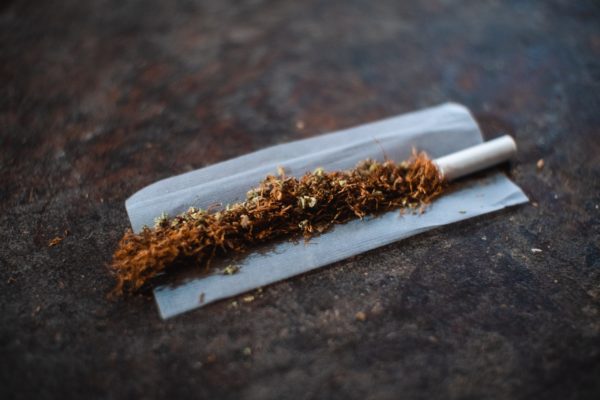Types of Tobacco

Types of Tobacco: A Comprehensive Guide
Tobacco has been part of human culture for centuries, evolving into a wide array of products that cater to different preferences and lifestyles. Whether smoked, chewed, or used in modern alternatives, tobacco products are diverse in form and experience. Therefore, understanding the main types of tobacco can help consumers make informed choices and appreciate the variety available today.
Overview of Tobacco Products
Before diving into specific types, it’s important to understand that tobacco products vary widely in their form, use, and effects. They can be broadly categorized into smoked, smokeless, heated, and nicotine-only or herbal alternatives. Moreover, each category offers unique experiences and health considerations.
1. Smoked Tobacco Products
Smoked tobacco remains the most iconic and widely used form of tobacco consumption. This category includes:
- Cigarettes: The most popular smoked tobacco product, cigarettes are made from finely cut tobacco leaves rolled in paper. They are available in various strengths and flavors and are known for their portability and convenience. In addition, cigarettes are often the first tobacco product people try.
- Cigars: Crafted from whole tobacco leaves, cigars offer a richer, more complex smoking experience. Varieties include robusto, torpedo, and more, each with unique shapes and flavor profiles. Furthermore, cigars are often associated with special occasions.
- Pipes: Smoking loose tobacco in a pipe is a traditional method that allows for customization of blends and flavors. Also, pipe smoking tends to be a slower, more contemplative experience.
- Hookah/Shisha: Popular in many cultures, hookah involves smoking flavored tobacco (shisha) through a waterpipe, delivering a smooth and social experience. Additionally, hookah sessions often last longer and are shared among groups.
- Bidis and Kreteks: Bidis are small, hand-rolled cigarettes wrapped in tendu leaves, while kreteks are clove-infused cigarettes originating from Indonesia. Both offer distinctive flavors and cultural significance.
2. Smokeless Tobacco Products
Smokeless tobacco offers a discreet alternative to smoking, delivering nicotine without combustion. Common types include:
- Chewing Tobacco: Loose or compressed tobacco leaves chewed to release flavor and nicotine. Forms include loose leaf, plug, and twist. Consequently, chewing tobacco is often favored where smoking is prohibited.
- Snuff: Finely ground tobacco that can be dry or moist. Users place it in the mouth (oral snuff) or inhale it through the nose (nasal snuff). Moreover, snuff has a long history in Europe and North America.
- Snus: Originating in Sweden, snus is a moist tobacco pouch placed under the upper lip. It is popular for its convenience and lack of need for spitting. Therefore, snus is often considered more socially acceptable.
- Dipping Tobacco: Also known as moist snuff or “dip,” this product is placed between the cheek and gum for nicotine absorption. It provides a strong nicotine hit without smoke.
- Tobacco Pellets: Small pellets or bits placed in the mouth, popular in Scandinavia. These offer yet another alternative for discreet nicotine consumption.
3. Heated Tobacco Products
Heated tobacco products, sometimes called “heat-not-burn” devices, are a modern innovation. Instead of burning tobacco, these devices heat it to produce an inhalable aerosol, aiming to reduce harmful byproducts associated with combustion. Popular brands include IQOS and other vaporizer systems. Consequently, these products have gained popularity among smokers seeking reduced-risk alternatives.
4. Nicotine-Only and Herbal Alternatives
Not all nicotine products contain tobacco. This category includes:
- E-cigarettes/Vapes: Devices that vaporize e-liquid containing nicotine (often synthetic or extracted from tobacco), flavorings, and other ingredients. They offer a smoke-free experience and a wide variety of flavors. Additionally, vaping has become a popular cessation aid.
- Nicotine Pouches: Small pouches placed under the lip, containing nicotine but no tobacco leaf. They are discreet and spit-free, making them convenient for many users.
- Nicotinized Herbal Products: Herbal cigarettes or smokeless products infused with nicotine but made primarily from non-tobacco plant materials. These alternatives appeal to those seeking tobacco-free options.
5. Unique and Regional Tobacco Types
Certain regions have developed their own distinctive tobacco products:
- Dokha: A high-nicotine, additive-free tobacco from the Middle East, smoked in a small pipe called a medwakh. It delivers a strong and fast nicotine hit.
- Kizami: Japanese pipe tobacco prepared for use in kiseru pipes. It is finely shredded and often mixed with herbs.
- Mu’assel: Also known as shisha or hookah tobacco, this is a sweet, moist blend of tobacco, molasses, and flavorings, popular in Middle Eastern hookah lounges. It is often enjoyed socially.
Conclusion
The world of tobacco is vast and varied, offering everything from traditional smoked products to modern, smokeless, and nicotine-only alternatives. Whether you’re interested in classic cigars, discreet pouches, or innovative heated tobacco, understanding the different types can help you make informed decisions and find the product that best suits your lifestyle. Ultimately, choosing the right tobacco product depends on your preferences, health considerations, and cultural context.
References:
